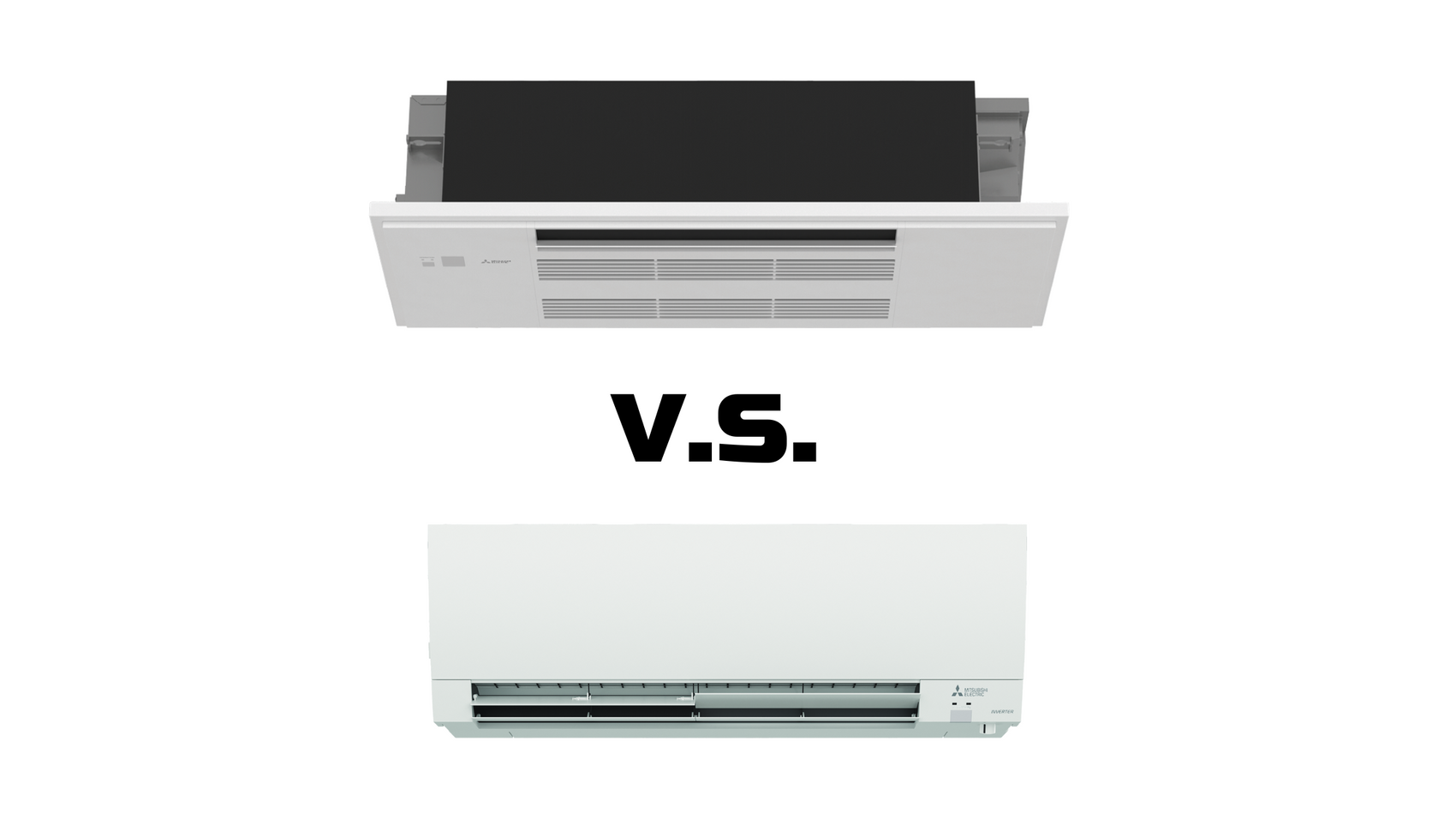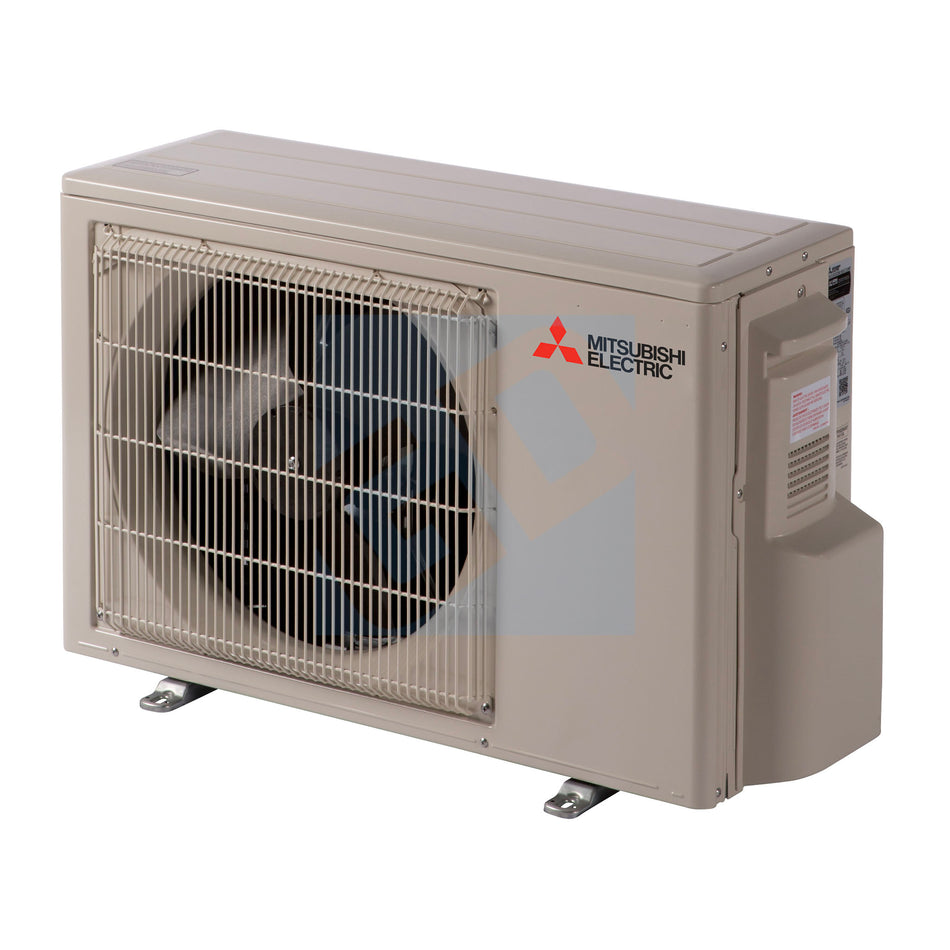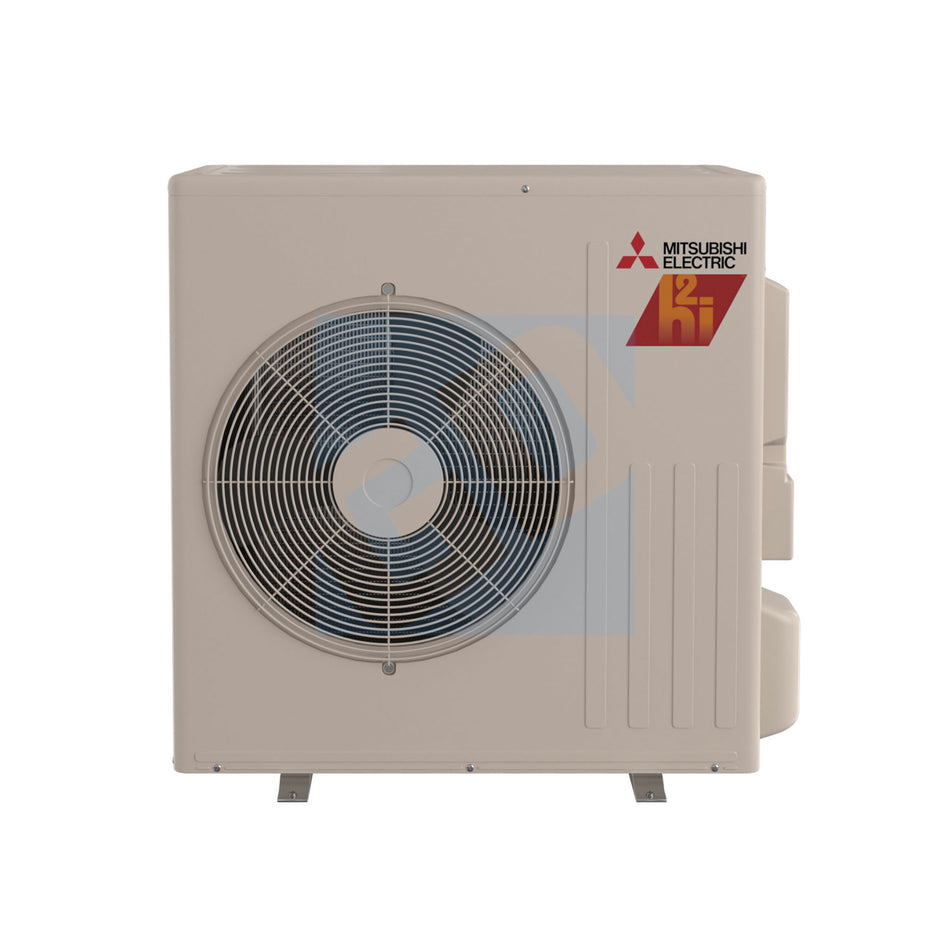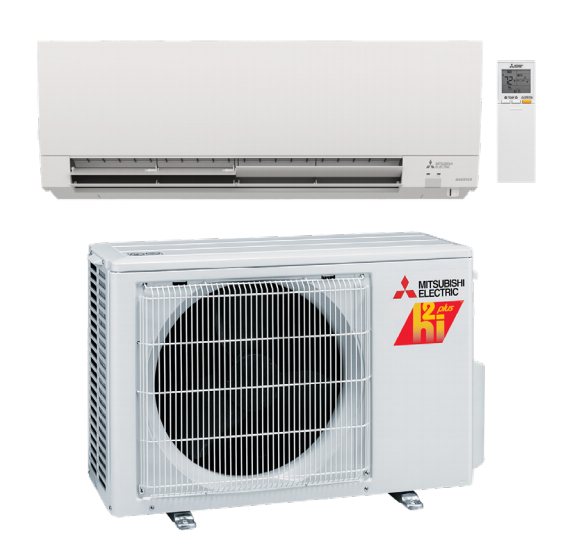Mini Split Ceiling Cassette vs Wall Mount – Which One is Worth the Investment?
Are you considering upgrading your HVAC system but unsure which option is the best investment? Look no further! In this article, we will break down the price and compare two popular choices: mini split ceiling cassette and wall mount units. These innovative systems provide efficient heating and cooling solutions while blending seamlessly into any space. But which one is right for you? We'll examine the factors that influence the cost, including installation, energy efficiency, and maintenance. By the end, you'll have a clear understanding of the benefits and value each option brings to the table. So, whether you're a homeowner looking to improve your indoor comfort or a business owner seeking a cost-effective solution, join us as we unravel the mystery of mini split ceiling cassette vs wall mount units and help you make an informed decision for your space.
Understanding the differences between mini split ceiling cassette and wall mount units
Mini split systems have gained popularity for their versatility and energy efficiency. Two common options are mini split ceiling cassette and wall mount units. Understanding the differences between these two types is crucial in making an informed decision.
Mini Split Ceiling Cassette Units:
Mini split ceiling cassette units are installed in the ceiling, providing even distribution of air throughout the space. They are designed to be discreet and blend seamlessly into any interior. One of the key advantages of ceiling cassette units is their ability to deliver conditioned air in multiple directions, ensuring optimal comfort in any room. However, it's important to note that the installation process for ceiling cassette units can be more complex and time-consuming compared to wall mount units.
Mini Split Wall Mount Units:
On the other hand, mini split wall mount units are mounted on the wall, typically near the ceiling or higher up on the wall. These units are compact and easy to install, making them a popular choice among homeowners and businesses. Wall mount units provide efficient heating and cooling, allowing you to control the temperature in specific areas. However, they are not as aesthetically pleasing as cassettes.
Overall, the main difference between mini split ceiling cassette and wall mount units lies in their installation and aesthetic appearances. Ceiling cassette units offer a more discreet appearance and multi-directional airflow, while wall mount units are easier to install and provide targeted heating and cooling in specific areas.
Advantages and disadvantages of mini split ceiling cassette units
Mini split ceiling cassette units offer numerous advantages and disadvantages that are worth considering before making a purchasing decision.
Advantages of Mini Split Ceiling Cassette Units:
1. Discreet Appearance: Mini split ceiling cassette units are installed in the ceiling and are barely noticeable, providing a seamless look.
2. Multi-Directional Airflow: 4 way ceiling cassette units are designed to distribute air in multiple directions, ensuring consistent comfort throughout the space, while 1 way ceiling cassettes are 1 directional.
3. Adaptable Installation: 1 way ceiling cassettes like Mitsubishi's MLZ Series are designed to fit within 16" joists. These units prove to be great when you do not want to do any additional carpentry.
4. Quieter Operation: The placement of the unit in the ceiling helps to reduce noise levels, creating a more peaceful indoor environment.
Disadvantages of Mini Split Ceiling Cassette Units:
1. Complex Installation: Installing ceiling cassette units can be more complicated and time-consuming due to the need for ceiling modifications and ductwork.
2. Higher Cost: Ceiling cassette units are generally more expensive than wall mount units, requiring a larger initial investment.
Considering these advantages and disadvantages will help you determine if mini split ceiling cassette units are the right choice for your specific needs.
Advantages and disadvantages of mini split wall mount units
Mini split wall mount units offer their own set of advantages and disadvantages, which are important to consider when evaluating your options.
Advantages of Mini Split Wall Mount Units:
1. Easy Installation: Wall mount units are quick and easy to install, making them a convenient option for homeowners and businesses.
2. Targeted Heating and Cooling: These units allow you to control the temperature in specific areas, providing personalized comfort.
3. Cost-Effective: Wall mount units are generally more affordable than ceiling cassette units, making them a budget-friendly choice.
4. Space-Saving Design: The compact size of wall mount units helps to save space, making them ideal for smaller rooms or areas with limited wall space.
Disadvantages of Mini Split Wall Mount Units:
1. Visible Placement: Wall mount units are installed on the wall and can be more noticeable compared to ceiling cassette units.
2. Limited Air Distribution: These units may not distribute air as evenly as ceiling cassette units, resulting in potential temperature variations across the room.
3. Noise Levels: Wall mount units can produce more noise compared to ceiling cassette units due to their location at eye level.
Considering these advantages and disadvantages will help you determine if mini split wall mount units are the right choice for your specific needs.
Factors to consider when choosing between a mini split ceiling cassette and wall mount unit
When deciding between mini split ceiling cassette and wall mount units, several factors should be taken into account to ensure the right choice for your space and budget.
1. Room Size and Layout: The size and layout of the room will influence the type of unit that is most suitable. Ceiling cassette units are ideal for larger spaces with multiple rooms, while wall mount units are better suited for smaller areas or single rooms.
- Wall space is another factor to consider. An example of this would be a kitchen: sometimes cabinets take up all the wall space and hence forcing you to look to the ceiling as a potential spot for a new mini split unit.
2. Installation Complexity: Consider the complexity of the installation process. Ceiling cassette units require modifications and access to the ceiling, potentially adding time and cost to the installation. Wall mount units, on the other hand, are relatively straightforward to install.
3. Air Distribution Needs: Evaluate your air distribution needs. If you require consistent airflow in multiple directions, a ceiling cassette unit may be the better choice. However, if you prefer targeted heating and cooling in specific areas, a wall mount unit may be more suitable.
4. Budget: Set a budget for your HVAC system upgrade. Ceiling cassette units tend to be more expensive due to their installation requirements, while wall mount units are generally more affordable.
5. Aesthetics: Consider the visual impact of the unit. Ceiling cassette units offer a more discreet appearance since they are installed in the ceiling. Wall mount units are more visible but can still be selected in styles that complement your interior design.
By considering these factors, you can make an informed decision that aligns with your specific needs and budget.
Cost comparison between mini split ceiling cassette and wall mount units
The cost of mini split ceiling cassette and wall mount units can vary based on several factors, including the brand, capacity, features, and installation requirements. Understanding the cost comparison will help you determine the most suitable option for your budget.
Mini Split Ceiling Cassette Units:
Ceiling cassette units are generally more expensive compared to wall mount units. The units themselves are more expensive most likely due to the fact that the manufacturer produces significantly more wall mounted units than the ceiling cassettes. Additionally, the complex installation process will also cost you in labor and materials.
Mini Split Wall Mount Units:
Wall mount units are typically more affordable than ceiling cassette units. The straightforward installation process reduces labor costs, making them a cost-effective choice.
Ultimately, the cost comparison between mini split ceiling cassette and wall mount units will depend on various factors, and it's essential to evaluate your budget and long-term savings before making a decision.
Installation considerations for mini split ceiling cassette and wall mount units
The installation process is an important consideration when choosing between mini split ceiling cassette and wall mount units. Understanding the installation requirements will help you determine which option is most suitable for your space.
Mini Split Ceiling Cassette Units Installation:
The installation of ceiling cassette units involves several steps and considerations. First, the ceiling must have enough space to accommodate the unit, which may require modifications. Next, line-set needs to be installed to connect the unit to the external condenser. This process can be complex and time-consuming, requiring professional expertise. It's important to plan for these additional installation requirements and factor them into your decision-making process.
Mini Split Wall Mount Units Installation:
Wall mount units are relatively easy to install compared to ceiling cassette units. They require minimal modifications to the wall and typically do not involve ductwork. The unit is mounted on the wall, and the refrigerant lines and electrical connections are connected to the external condenser. The simplicity of the installation process makes wall mount units a popular choice for homeowners and businesses.
Considering the complexity and time involved in the installation process will help you make an informed decision based on your specific needs and requirements.
Maintenance and upkeep of mini split ceiling cassette and wall mount units
Proper maintenance and upkeep are essential for ensuring the longevity and efficiency of your mini split system, regardless of whether you choose ceiling cassette or wall mount units.
Maintenance of Mini Split Ceiling Cassette Units:
To maintain the performance of ceiling cassette units, regular cleaning and filter replacement are necessary. The filters should be cleaned every few months, depending on usage. Additionally, it's important to schedule professional maintenance at least once a year to ensure optimal performance and identify any potential issues.
Maintenance of Mini Split Wall Mount Units:
Wall mount units also require regular cleaning and filter replacement. The frequency of cleaning will depend on usage. It's recommended to clean the filters every few months. Similar to ceiling cassette units, professional maintenance should be scheduled annually to keep the unit in optimal condition.
By following these maintenance practices, you can maximize the lifespan and efficiency of your mini split system, regardless of the unit type.
Customer reviews and experiences with mini split ceiling cassette and wall mount units
Understanding the experiences of customers who have installed mini split ceiling cassette and wall mount units can provide valuable insights into the performance and satisfaction levels of each option.
Mini Split Ceiling Cassette Units:
Many customers appreciate the discreet appearance of ceiling cassette units, as they seamlessly blend into the ceiling and do not disrupt the overall aesthetics of the space. The multi-directional airflow is also highly regarded, as it ensures even distribution of conditioned air. However, some customers have voiced concerns about the complexity of the installation process and the higher initial cost.
Mini Split Wall Mount Units:
Customers who have installed wall mount units appreciate the ease of installation and the ability to control the temperature in specific areas. The compact size and space-saving design of wall mount units are also praised. However, some customers have mentioned potential temperature variations across the room due to limited air distribution.
Reading customer reviews and experiences can help you gain insights into real-world scenarios and make an informed decision based on the experiences of others.
Conclusion: Choosing the right mini split system for your needs
In conclusion, both mini split ceiling cassette and wall mount units offer efficient heating and cooling solutions, each with their own advantages and disadvantages. The choice between the two ultimately depends on your specific needs, budget, and preferences.
If you prioritize a discreet appearance, multi-directional airflow, and are willing to invest in a more complex installation process, mini split ceiling cassette units may be the right choice for you. On the other hand, if easy installation, targeted heating and cooling, and cost-effectiveness are your priorities, mini split wall mount units may be more suitable.
Remember to consider factors such as room size and layout, installation complexity, air distribution needs, budget, and aesthetics when making your decision. Additionally, proper maintenance and upkeep are crucial for both unit types to ensure optimal performance and longevity.
By carefully evaluating these factors and considering customer reviews and experiences, you can confidently select the mini split system that best meets your heating and cooling needs while providing long-term value for your investment. Choose wisely and enjoy the comfort and efficiency that a mini split system brings to your space.






